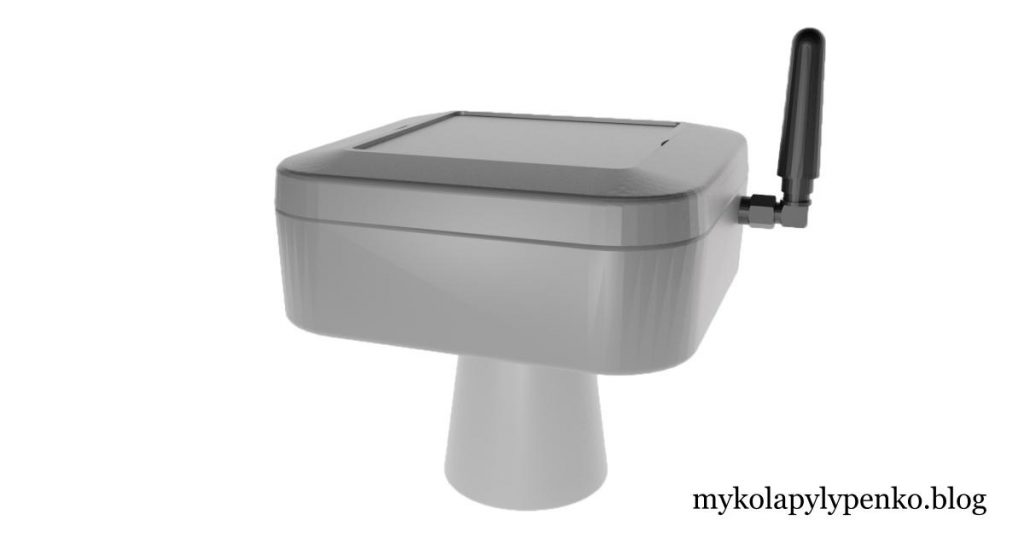
Previously I lived in Yevpatoria. It’s a city in Western Crimea, by the Black Sea. Yearly dolphins migrate from Odessa to Sevastopol and back. There are old moorings that have rusted, and only their pillars remain. Unfortunately, dolphins sometimes do not notice them and hurt their bellies.
Ultrasonic distance sensor works according to the principle similar to echolocation, like dolphins. The difference is that these sensors can measure the distance from the bottom to the top (liquid level) and from top to bottom (distance to the surface). Both types of sensors have their pros and cons. For example, if the sensor is installed under the tank, it is more accurate. And if there are two (simultaneously), they can also measure the liquid density. As a result, mass can be calculated as well. But if the sensor is installed on the roof of the tank, it does not interfere with garbage (sand) that can be accumulated at the bottom of the tank.
The ultrasonic distance sensor (the second type) is also available in the IoT version. We have just talked about it with Matthieu, an IoT expert from Spain.
Matthieu, ATIM is currently working on the updated version of Ultrasonic Distance Sensor. What is it for? Where might it be implemented?
Right, our R&D department is developing a new version of the ultrasonic distance sensor. The sensor aims at covering needs in agriculture, energy, and waste remote monitoring fields: for example, cereals silos, fuel tanks, or waste containers would be target applications.
Usually, when talking about IoT sensors, thinking about their battery life (on a single battery). What is the sensor operating time?
Well, the battery life is linked to several parameters, the most important to be taken into account is the number of frame emissions (operating time) set by the user. Indeed, the battery life would be affected by the frequency of the signal, whether the ultrasonic distance sensor sends measurement data once a week or twice a day. We ensure battery life consumption with a frame emission once per hour to be at least 5 years.
Is that right that ultrasound reflects equally from liquids and solid surfaces? Are there any differences?
The ultrasound sensor does reflect the liquid-solid surfaces with great reliability. What is extremely important to take into account are the vapors that might emanate from the environment and therefore create an unfriendly and foggy path for ultrasound waves. In those specific cases, the precision of the measurement might be affected.
If there is a stiffener inside the reservoir, how does it distinguish if the signal reflects from it or the liquid surface?
The sensor does get the measurement distance exclusively and could not distinguish the type of material through ultrasounds. It is also advised to locate the sensor wisely inside the reservoir or tank to collect the pertinent measurement.
Is it possible to use this sensor as a measuring device? And how accurate is it?
The ultrasonic distance sensor is a measuring device! The detection range of the device is between 20 cm and 5.5 m with a margin of ±1 cm.
The sensor can be configured as a trigger when the level is exceeded. When we talk about smart bins, is it possible?
Alerts might be set to inform the user when a certain level is reached and take pertinent action accordingly. As the device is exclusively transmitting the measurement data, the trigger configuration needs actually to be done on the IoT platform level.
So how would you summarise, what ultrasonic distance sensor is useful for humanity? Could you give any examples of their usage?
Well, a Low Power Wide Area ultrasonic distance sensor allows you to measure any distance within its range of operation remotely. This would be particularly helpful to take preventive actions in case a river reaches a critical height level, for example. It could also ensure the grain silos always distribute food to the cattle and message the farmers to refill them on time. Another application could be to monitor the snow level and alert in case of danger.
Рlease, let us know by using the feedback form below …
Leave a Reply